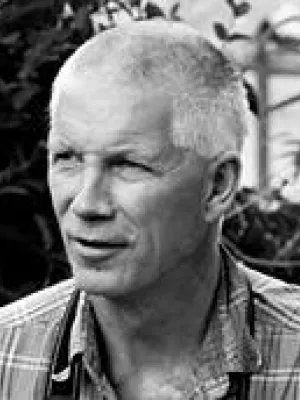
Jonas Ardö
Professor

Dynamic response of NDVI to soil moisture variations during different hydrological regimes in the Sahel region
Author
Summary, in English
Over the last few decades, the African Sahel has become thefocus of many studies regarding vegetation dynamics and theirrelationships with climate and people. This is because rainfalllimits the production of biomass in the region, a resource onwhich people are directly dependent for their livelihoods. In thisstudy, we utilized a remote-sensing approach to answering thefollowing two questions: (1) how does the dynamic relationshipbetween soil moisture and plant growth vary across hydrologi-cal regimes, and (2) are vegetation-type-dependent responsesto soil moisture availability detectable from satellite imagery? Inorder to answer these questions, we studied the relationshipbetween monthly modelled soil moisture as an indicator forwater availability and the remotely sensed normalized differ-ence vegetation index (NDVI) as a proxy for vegetation growthbetween a“recovery rainfall period”(1982 to 1997) and a“stable rainfall period”(1998 to 2013), at different time lagsacross the Sahel region. Using windowed cross-correlation, wefind a strong significant positive relationship between NDVI andsoil moisture at a concurrent time and at NDVI lagging behindsoil moisture by 1 month for grassland, cropland, and decid-uous shrubland vegetation–the dominant vegetation classes inthe Sahel. South of the Sahel (the Sudanian and Guinean areas),wefind longer optimal lags (soil moisture lagged by 1–3 months) in association with mixed forest and deciduousshrubland. Wefind no major significant change in optimal lagbetween the recovery and stable periods in the Sahelian region;however, in the Sudanian and Guinean areas, we observe atrend towards shorter time lags. This change in optimal lagsuggests a vegetation change, which may be a response to aclimatic shift or land-use change. This approach of identifyingspatiotemporal trends in optimal lag correlations between mod-elled soil moisture and NDVI could prove to be a useful tool formapping vegetation change and ecosystem behaviour, in turnhelping inform climate change mitigation approaches and agri-cultural planning
Department/s
- Dept of Physical Geography and Ecosystem Science
- BECC: Biodiversity and Ecosystem services in a Changing Climate
- MERGE: ModElling the Regional and Global Earth system
Publishing year
2017
Language
English
Pages
5408-5429
Publication/Series
International Journal of Remote Sensing
Volume
38
Issue
19
Document type
Journal article
Publisher
Taylor & Francis
Topic
- Climate Research
- Environmental Sciences related to Agriculture and Land-use
Status
Published
ISBN/ISSN/Other
- ISSN: 1366-5901

